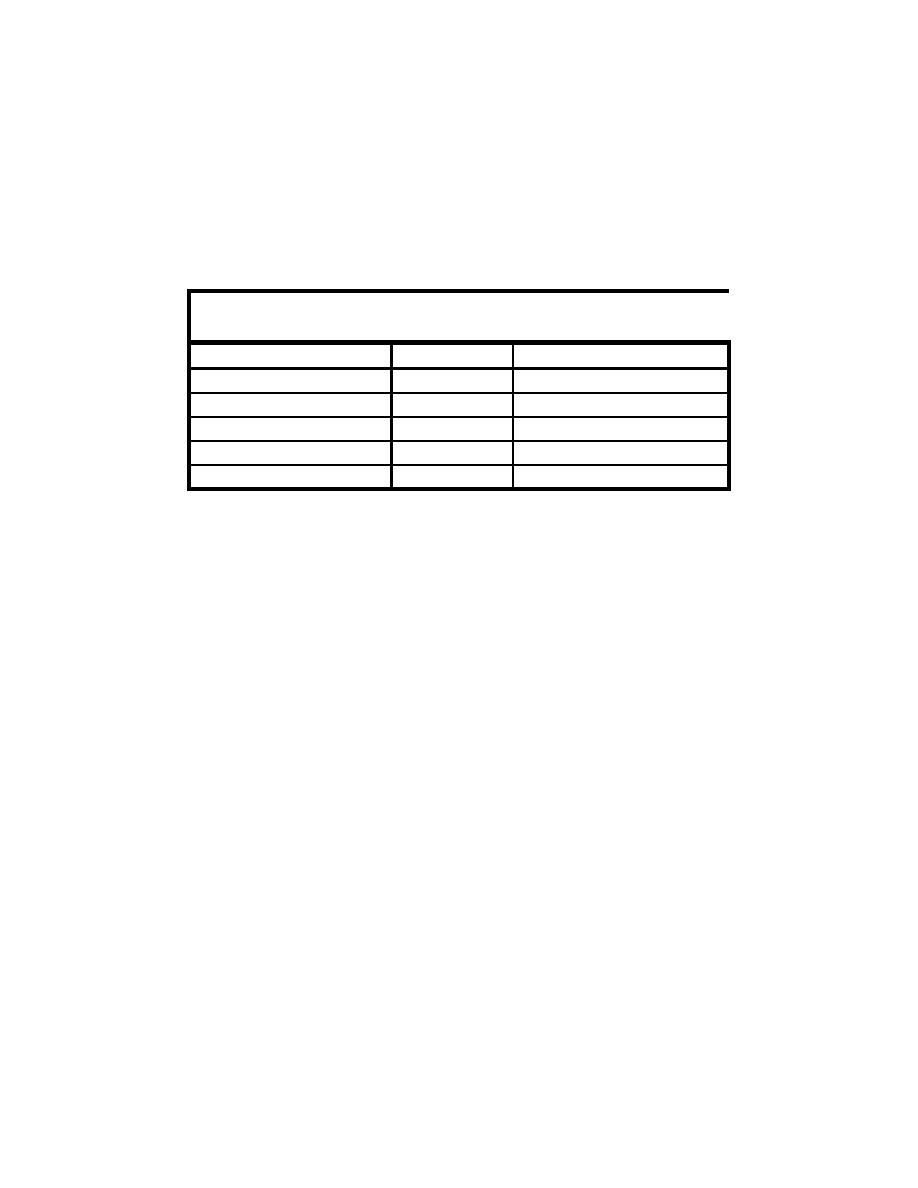
parallel jetties, which have a spacing of 3.66 m (12.0 ft) and extend 5.5 m (18 ft)
offshore.
Based on Froude's model law (Stevens 1942; Hughes 1993) and the linear
scale of 1:50, the model-prototype relations in Table 1 were derived. Dimensions
are in terms of length L and time T. As mentioned previously, other scales may be
assumed for the bathymetry, so different scaling relationships would apply other
than those listed in Table 1.
Table 1
Model-Prototype Scale Relations
Characteristic
Dimension
Model-Prototype Scale Relation
Length
L
1:50
Ar = Lr2
Area
1:2,500
Vr = Lr3
Volume
1:125,000
Tr = Lr1/2
Time (tidal and short wave period)
1:7.07
Velocity
Vr = Lr/Tr
1:7.07
The Idealized Inlet Facility is connected to a large sump (volume of 1.98
6
10 L (523,000 gal)) for water exchange so that tides may be produced in the fa-
cility ocean to drive tidal currents into and out of the inlet bay. A constant inflow
is introduced from the sump into the model ocean while a "rolling" gate either
reduces or increases flow area over an exit pipe into the sump, which causes ocean
rise or fall, respectively. The rolling gate is regulated by a controller connected to
a feedback loop comparing actual to desired water level. The two cylindrical
shapes in the upper middle of Figure 1 are storage tanks, each holding 182,000 L
(48,000 gal) of water. They can be used to simulate a much larger bay area by
storing flood tide water and releasing it back to the bay to flow to the ocean during
ebb flow. They were not used in this study as the size of bay surface area relative
to channel cross section was adequate. Pumps and control valves associated with
this procedure are located adjacent to the storage tanks.
piping system is shown in Figure 1. Water is either collected (flood flow) or dis-
tributed (ebb flow) through a system of manifolds in the bay, which may be ad-
justed for one, two, or three bay channels or a uniform flow across the bay. Water
is either released (flood flow) or taken from (ebb flow) the ocean headbay to com-
plete the circulation energized by the pumps located in front of the tanks in
Figure 1.
A 24.4-m- (80-ft-) long wave generator (Figure 1) produced either irregular or
monochromatic waves. Unscaled wave periods could be varied from 0.5 to about
3 sec and wave heights to 10 cm (at the generator location and for this particular
setup of the generator). Wave angle could be varied for specific tests by moving
the generator on its castors and orienting it at an angle to the beach.
6
Chapter 2 Experiment Arrangement



 Previous Page
Previous Page
